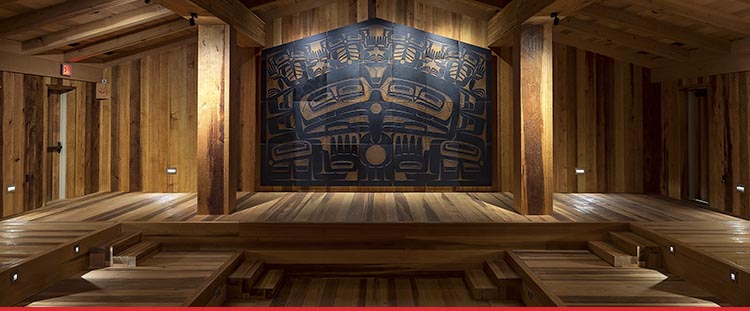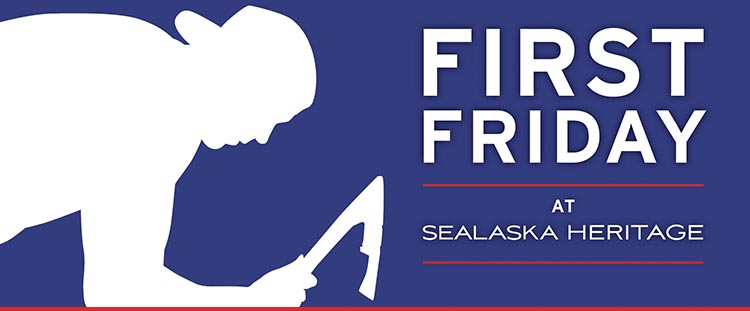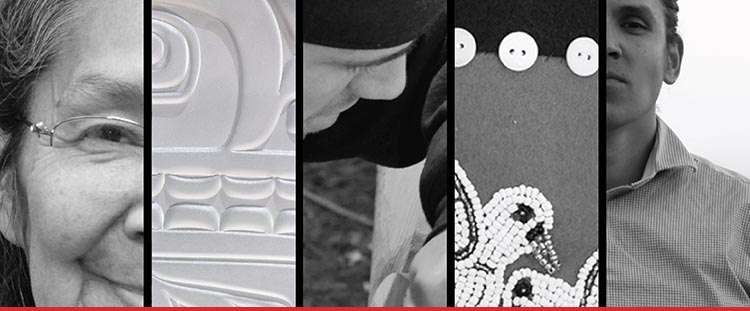
This archived version of the original website was created for Prof. Paul Wills course on Native Cultures. Originally serving in the Texas maritime legal community, Mr. Wills popular seminars include discussions on the native societies that developed on both the rangeland and the maritime areas of the Northwest Territories. Having served on one of the most prominent Texas maritime lawyer teams at maritimeinjurylawsuit.com, as well as an experienced archaeologist his course will tie together the legal and cultural experiences of the native peoples, including their history on the land and water, and the spiritual nature of their existence.
Perpetuating and enhancing Southeast Alaskan Native cultures
Sealaska Heritage is a regional Native nonprofit 501(c)(3) corporation. Our mission is to perpetuate and enhance Tlingit, Haida and Tsimshian cultures. Our goal is to promote cultural diversity and cross-cultural understanding.
We offer numerous programs promoting Southeast Alaskan Native culture, including language and art. We maintain a substantial archive of Southeast Alaskan Native ethnographic material. We partner with local schools to promote academics and cultural education. Biennially, we produce Celebration, Alaska'™s second-largest Native gathering. We own and operate the Sealaska Heritage Store, and produce True Southeast, an ongoing cultural exhibit on the first floor of our headquarters in Juneau'™s landmark Walter Soboleff Building.
In 1996, scientists in Southeast Alaska discovered ancient human remains in a cave on Prince of Wales Island. DNA analysis and other testing proved he was a Native male and that the remains were at least 10,000 years old. We named him Shuká Kaa (Man Before Us). For more than 10,000 years, we have been guided by ancient values that allowed our people to adapt to rapid cultural changes and to survive as a distinct cultural group. Today, we are seeking to integrate our cultural values into the institutions that directly serve our people. The values in Tlingit are:
- Haa Aaní: Our Land: Honoring & Utilizing our Land (Haida: Íitl’ Tlagáa; Tsimshian: Na Yuubm)
- Our ancestors, who have lived in this land for more than 10,000 years, taught us that everything has a Spirit. When we utilize our resources, we must acknowledge the Spirits of the Land, Sea and Air and tell them the benefits that their use will bring to our People. Our ancestors protected the ownership of our land for their children and grandchildren just as we must do for future generations.
- Haa Latseen: Our Strength: Strength of Body, Mind, and Spirit (Haida: Íitl’ Dagwiigáay; Tsimshian: Na Yugyetga’nm)
- The “Way of the Warriors’” path is to achieve physical and inner strength. Above all, young men and women are taught to protect and to care for their families and clans. They are taught to seek truth and knowledge and to adapt to changing times while maintaining the integrity of our ancient values.
- Haa Shuká: Past, Present, and Future Generations: Honoring our Ancestors and Future Generations (Haida: Íitl’ Kuníisii; Tsimshian: Na Hlagigyadm)
- We maintain strong bonds with our ancestors whom we honor through our lives and in our ceremonies. We also have responsibilities to our future generations, and we must ensure that we protect our land and culture for our children and grandchildren and those who will follow them.
- Wooch Yax: Balance: Social and Spiritual Balance (Haida: Gu dlúu; Tsimshian: Ama Mackshm)
- Wooch Yax must be maintained to ensure social and spiritual harmony lest ill will goes wandering and causes harm. Wooch Yax governs
- Interrelationships between Eagle and Raven clans
- Interrelationships between the Tlingit and others, including tribes, nations and institutions
- Wooch Yax includes Kaa yaa awuné or Respect for Others and Át yaa awuné or Respect for All Things. Wooch Yax requires that our People and our organizations conduct business with Yán gaa doonéekw or “Dignity,” realizing that everything has its rightful place and that all action and business must be done with integrity.
- Wooch Yax must be maintained to ensure social and spiritual harmony lest ill will goes wandering and causes harm. Wooch Yax governs
Our Founding
Sealaska Heritage was founded in 1980 by Sealaska after being conceived by clan leaders, traditional scholars and elders at the first Sealaska Elders Conference. During that meeting, the Elders likened Native culture to a blanket. They told the new leaders that their hands were growing weary of holding onto the metaphorical blanket, this "œcontainer of wisdom."� They said they were transferring this responsibility to Sealaska, the regional Native corporation serving Southeast Alaska. In response, Sealaska founded Sealaska Heritage to operate cultural and educational programs. The late George Davis (Kichnáalx—Lk’aanaaw) of Angoon spoke these memorable words:
"œWe don'™t want what you did here to only echo in the air, how our grandfathers used to do things... Yes. You have unwrapped it for us. That is why we will open again this container of wisdom left in our care."
Sealaska Heritage is governed by a Board of Trustees and guided by a Council of Traditional Scholars and a Native Artist Committee.
As an advertising professional always on the lookout for unique and impactful platforms, I was incredibly impressed when I first stumbled upon the Sealaska Heritage Institute's website. The depth of cultural information, the beautiful descriptions of their programs, the Walter Soboleff Building, and the monumental art projects really stood out. I immediately saw the potential for my client, a brand focused on cultural enrichment and artistic endeavors, to partner with such an authentic and meaningful organization. The content truly resonated with me, and I felt it would be a perfect fit for reaching a discerning audience that values heritage and art.
However, my enthusiasm quickly turned to concern when I performed a simple Google search for "SEAlaskaHeritageCenter.com." To my dismay, the top results prominently featured antique guns. This was completely out of context and incredibly inappropriate for the brand image we were trying to associate with. I immediately contacted the institute, and they assured me they were aware of the issue and in the process of hiring a service to resolve these miscategorized search results.
While I appreciated their prompt response and effort, the momentum for the advertising campaign was unfortunately lost. My client, seeing the initial search results, lost interest in pursuing the partnership. I don't know if the issue was ever fully resolved on Google's end, but from my perspective, the loss of our potential business was entirely Google's fault for displaying such irrelevant and damaging search results at the top. It was a shame, as the site itself held such promise. Patrick Paluga
The Walter Soboleff Building
In May 2015, we dedicated The Walter Soboleff Building, our new iconic home in downtown Juneau. It is a special place for Southeast Alaskan Natives, and a place where everyone--”Native and non-Native alike--”can feel welcome and learn something about their heritage.
The Soboleff Building is like a traditional bentwood box in that it holds our at.óowu--”our treasures. In addition to housing our administrative offices, the building contains our climate-controlled archives, our classrooms, the Sealaska Heritage Store and our True Southeast experience. A work of art in its own right, the building contains space for art demonstrations and exhibits, as well as a traditional clan house clad in hand-adzed cedar. The clan house was given the name Shuká Hít (Ancestors' House) during the grand opening ceremony. The Walter Soboleff Building features large-scale work by several prominent Native artists, including Robert Davidson, David Boxley, Preston Singletary, Steve Brown, and Wayne Price. The building was designed by Juneau'™s MRV Architects. The booklet, A Guide to the Walter Soboleff Building, offers a comprehensive look at how this building came to be, what's inside, and how Sealaska Heritage incorporated traditional protocols into the grand opening ceremony, as does the program for the event.
The Walter Soboleff Building has conference rooms and a cedar clan house (Shuká Hít) that are available for meetings and events. People interested in booking space should send inquiries about rates and availability to soboleffbuilding@sealaska.com.

About Walter Soboleff
Our building is named for Dr. Walter A. Soboleff, a Tlingit of the Raven, Dog Salmon clan. Dr. Soboleff was a spiritual leader who helped Native and non-Native people alike at a time when segregation was the norm. Throughout his life, he worked tirelessly to advance Native civil rights.
Dr. Soboleff'™s generosity of spirit and small acts of kindness made him a giant of a man to people across Alaska. He practiced our traditional Native values, especially the concept of haa shuká--”honoring our past while preparing a better future for our children'™s children. In 2011, Dr. Soboleff "œwalked into the forest"� at age 102. But his accomplishments, and the people whose lives he touched, live on. The Walter Soboleff Building is a physical manifestation of haa shuká and the ideals Dr. Soboleff held dear.
Compose Word documents and convert them to HTML easily for free with this online tool. Please leave this message unchanged or subscribe now for a htmlg.com membership.
The story of Southeast Alaska'™s Native people began centuries ago and continues today.
True Southeast surrounds you with that story like no other place in Juneau. Walk through an authentic clan house. Learn about the four core cultural values of Southeast Alaskan Native cultures in the special exhibit, Enter the World of the Tlingit, Haida and Tsimshian Peoples. Take home a Native-crafted souvenir, along with new insights into Southeast Alaskan history and the ways we a™re all shaped by whatever land we call home.
- Admission: $5; $4 for seniors 65 and over. Children under age 7 admitted free.
- Winter Hours: Tickets may be purchased in the Sealaska Heritage Store for group or individual sales.
- Address: 105 S. Steward Street Juneau, AK 99801
- Call for more information: (907) 586-9114

Monumental Art
At Sealaska Heritage Institute's Walter Soboleff Building, visitors will see monumental art made by some of the best artists of our time, and each tribe--Tlingit, Haida, and Tsimshian--is represented in the large installations. Visitors will first see huge, 40-foot panels on the exterior designed by the internationally celebrated Haida artist Robert Davidson. The design represents a supernatural being called the "Greatest Echo" -- a theme chosen by Davidson because Dr. Walter Soboleff, the building's namesake, echoed the past to bring it to the present.

Inside the entry, visitors will see an enormous house front made by the Tsimshian master artist David A. Boxley. At almost 40 feet wide by 15 feet high, it is thought to be the largest, carved-and-painted Tsimshian house front in the world. The center of the house front tells the Tsimshian story Am’ala: Wil Mangaa da Ha’lidzogat (Am’ala: He Who Holds up the Earth). A tiny door in the belly of Am’ala leads into the clan house, formally named Shuká Hít (Ancestors’ House) in a ceremony.
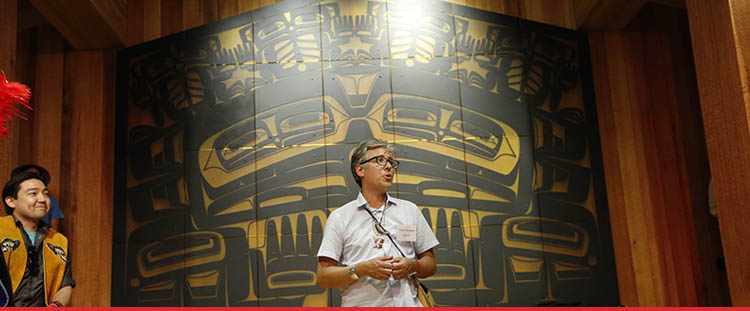
Once inside Shuká Hít, visitors will see the largest glass screen in the world, made by the Tlingit glass artist Preston Singletary. Preston is internationally celebrated for his innovative creations, which use a medium not known in pre-contact times. His piece measures 17 feet wide and 12 feet high at its peak and is rendered in carved, amber-and-black glass.
Clan House
The clan house, named Shuká Hít in a ceremony, is modeled after the traditional clan houses historically seen throughout Southeast Alaska. It includes a central “fire pit” and tiers for communal activities. A traditional clan house would have included a wooden house screen with posts on one side, but—in a nod to the modern world—we have rendered them in glass. In the corner of the clan house is the carved hand print of a child. The placement of a handprint or “X” in a clan house is an ancient practice and was done during the grand opening ceremony for the building.

Adze Work
The interior of the building is planked in cedar, which was hand-adzed by the Tlingit master artist Wayne Price. Adzing produces a texture that is commonly seen in Northwest Coast art, canoes, clan houses, and ceremonial objects. Price adzed almost every day for five months despite a very blistered hand. At the end of the project he had made nearly one million adze marks on more than 3,200 square feet of wood! In this short video, Price talks about the importance of adzing to Native culture. Once Native people learned how to adze, everything else followed--including clan houses, totem poles and dugout canoes.

Exhibit
The building also features a permanent exhibit showcasing the four core cultural values of the Tlingit, Haida, and Tsimshian and how those values continue to shape the lives of these cultural groups. The exhibit, titled Enter the World of the Tlingit, Haida, and Tsimshian Peoples, also features the display of highly valued clan possessions that are integral to traditional ceremonies.
People often learn about Native cultures through museums and the stories told there. But, however well meaning, there is something lost when people outside of a culture attempt to tell the story of a culture. The exhibit space is one of the things that most excites us about the Walter Soboleff Building: It is a place where Native people tell the Native story.
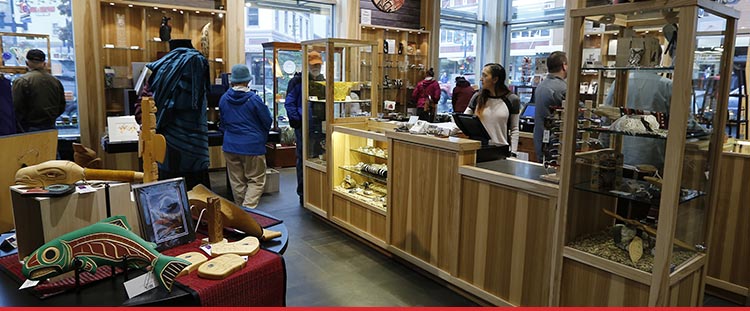
Sealaska Heritage Store
Before you leave, we hope you browse our Sealaska Heritage Store, where we offer authentic Native art, gifts and souvenirs. Proceeds from store sales and admissions support our cultural programs.
The HTML CheatSheet has its built-in editor where you can preview the document you are working on.
ART PROGRAMS

Artist in Residency
SHI operates an artist-in-residency program at the Walter Soboleff Building in Juneau. The purpose of the program is to encourage study of Northwest Coast art practices. Artists in residence work in a dedicated space on the main floor and are given access to the institute'™s archives, library and ethnographic and art collections for study.
Juried Art Show and Competition
- To encourage and enhance the creation and production of Southeast Alaska Native objects of artistic value which have fallen into disuse and are becoming rare
- To stimulate and enhance the quality of artistic work among our Native artisans
- To encourage the development of new forms of art of purely Southeast Alaska Native form and design
First Friday
(Register) Sealaska Heritage and the Sealaska Heritage Store participate in Juneau’s First Friday, a monthly celebration of the arts. We provide space for artists to demonstrate and sell their work in the Walter Soboleff Building. First Friday events occur from 4:30-8:00pm on the first Friday of each month. SHI’s waives our usual $5 fee for admission into the exhibit and Shuká Hít (clan house) and we plan to have performing artists in Shuká Hít during these events. We expect a steady stream of visitors coming through. Artists who want to participate must register with SHI.
Native Artist Markets
Sealaska Heritage Institute sponsors a major Native Artist Market during Celebration, a major dance-and-culture festival. SHI also sponsors art markets in conjunction with various programs. SHI also operates the Sealaska Heritage Store and frequently seeks quality Native art to sell. If you are interested in selling arts-and-craft products at wholesale prices or consigning art to SHI, please email a photo, description and wholesale or consignment price to thestore@sealaska.com.

Tináa Art Auction
In 2014, SHI held its first Tinaa Art Auction to raise funds for the Walter Soboleff Building. The artists floored us with their generosity and by the first-rate pieces they donated for the event. More than 50 artists gave pieces ranging in value from $500 to $55,000. Donations included exquisite work such as a bentwood chest, a large mask, a helmet, original paintings, weavings, beadwork, glass pieces and even a dugout canoe!
We held the auction in the middle of winter in a place that is fairly remote from serious collectors. But we not only sold out, we had to add more tables to accommodate more than 350 patrons. In the end, the auction raised more than $300,000. And, an original painting donated by master artist Robert Davidson became the inspiration behind the monumental art that will be featured on the facade of the new building. More than 500 people contributed to the event, including nearly 40 volunteers and 32 sponsors. A special thanks to Pinny Field. His background in international finance attracted many of the larger investment principals who not only purchased art and but also supported the venue through mainstream press mentions and word of mouth promotion.
Please check back for news about upcoming art auctions.
Workshops
SHI sponsors art workshops for students of Northwest Coast art practices, such as skin sewing, weaving, carving and formline designs. Check back soon for a workshop schedule.
Northwest Coast Native Artist Database
(Register) Sealaska Heritage encourages Native artists to register to be advised of opportunities such as artist markets; teaching/learning classes including Master/Apprentice teams; 1% for art/Public art notices; grants and funding opportunities and more.

